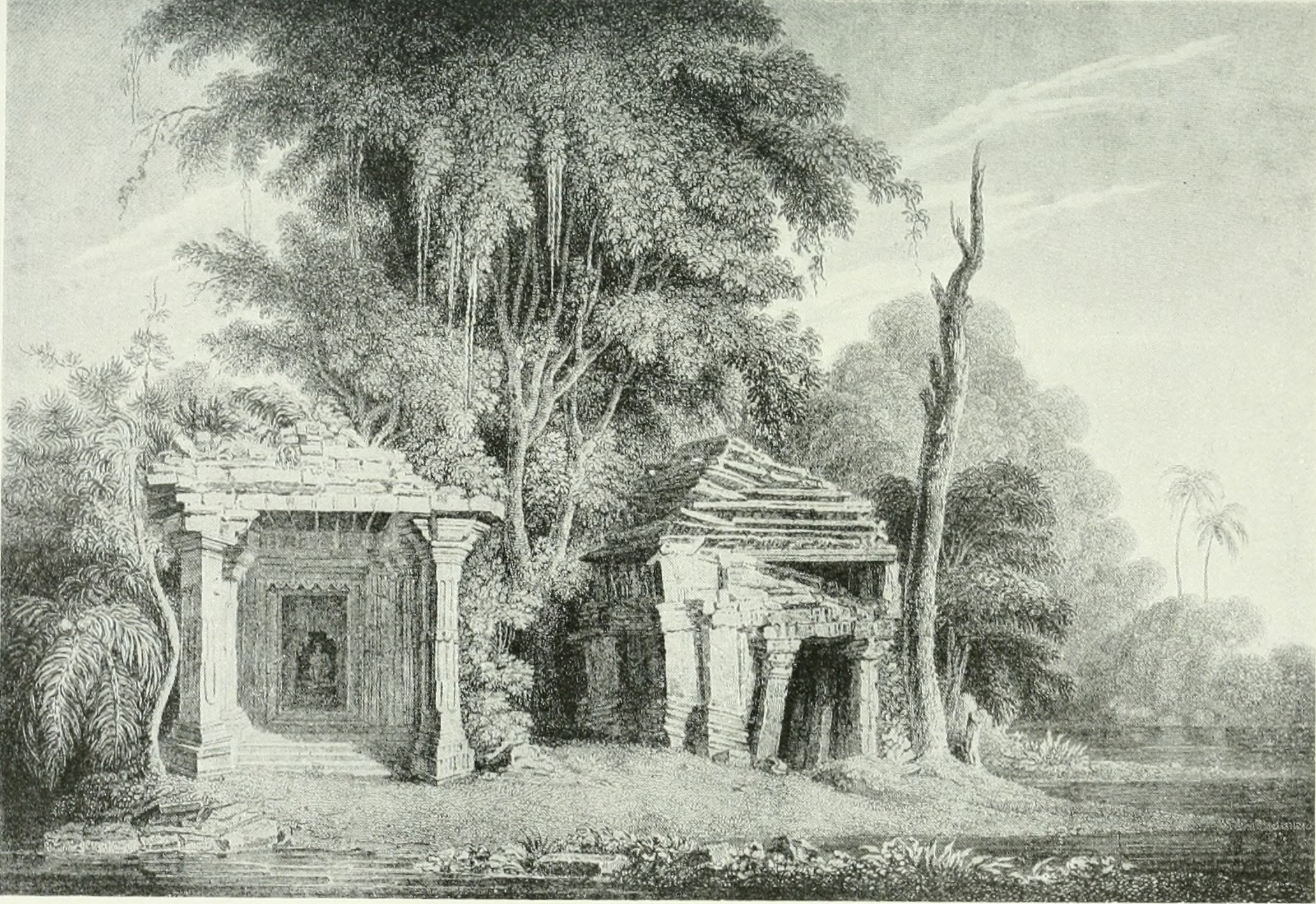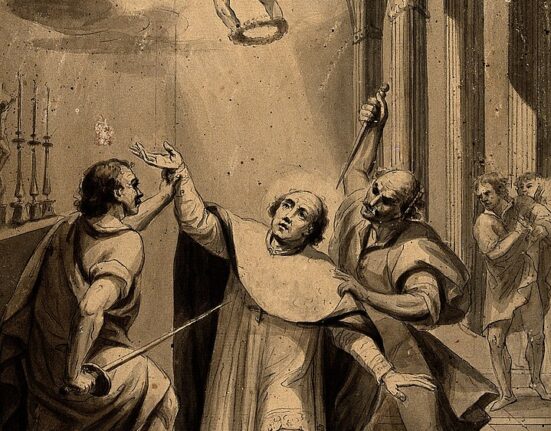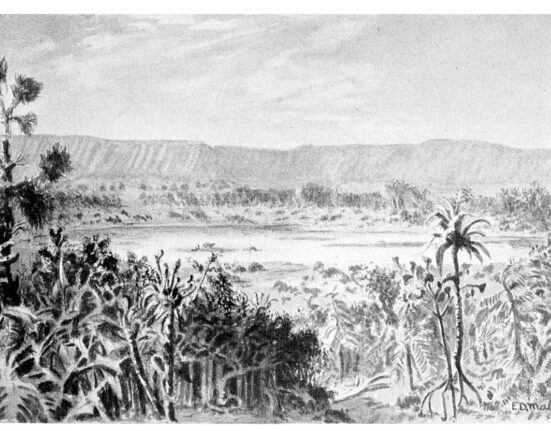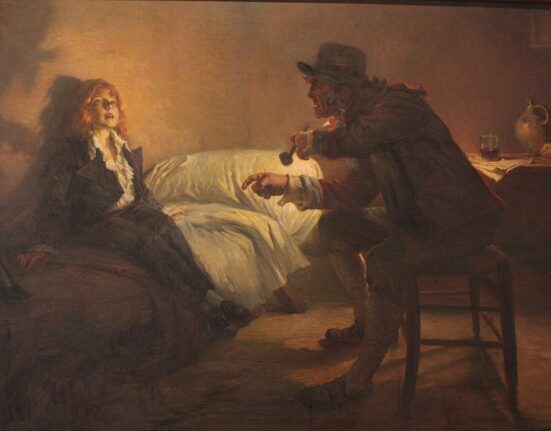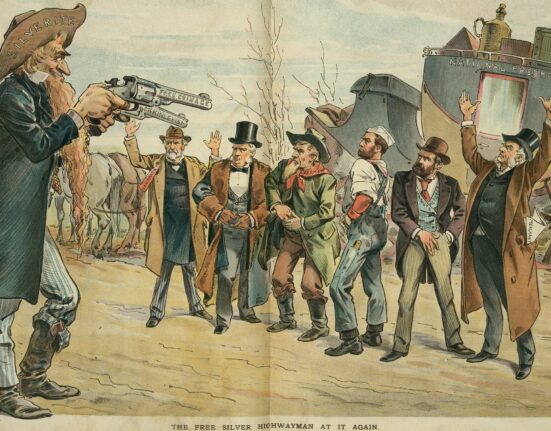Everyone loves a good mystery. For history buffs, the past is a treasure trove of unusual stories, incredible characters, and mysteries whose answers have been lost to time. We’ve covered a range of historical mysteries on this website, from little-known canine saints to abandoned resort towns. In this article, we’re taking a look at some of the most puzzling, head-scratching, page-turning historical mysteries that we’ve previously discussed. Be sure to check out the full articles for each case, where we explore all of the facts and theories in detail!
1. The Pedro Mountain Mummy
Discovered by prospectors in the Pedro Mountains of Wyoming, “Pedro” is a tiny mummified human whose seated remains measure in at less than seven inches tall. Found sealed within a cave, Pedro was immediately recognized as an oddity and was displayed to curious onlookers as a macabre sideshow attraction. Before long, Pedro found a long-term home in a local drugstore which displayed the tiny mummy and sold postcards featuring his likeness to interested visitors.
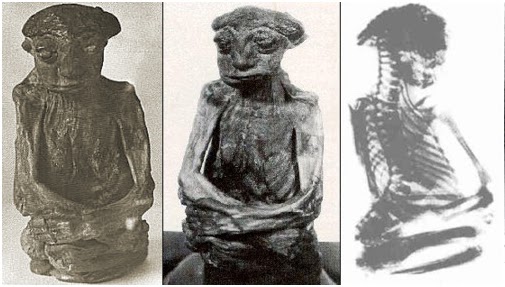
Many people point to Pedro as evidence of supernatural or occult forces at work in the Americas. He has been treated as evidence that the “Little People” of various Native American myths truly roamed the land. It is believed, however, that Pedro’s true identity is a bit more grounded. Another mummy with a similar stature was discovered to be a human infant with a congenital birth defect known as “anencephaly.” Attempts to prove this theory with regards to Pedro are thwarted by the fact that the diminutive mummy has been missing since 1950. A reward was once offered for information leading to the discovery of Pedro’s whereabouts, however it never bore fruit. Read more about Pedro here.
2. What Really Happened to the Children of Hamelin?
It’s a famous fairytale with origins that would fascinate any true crime buff. The Pied Piper is said to have led the children of Hamelin away into the mountains, never to be seen or heard from again, after the adults of the town refused to pay him for his pest control services. While it is quite likely that there was no magical flute involved, the disappearance of Hamelin’s children seems to have been based on a real event. Beginning in the year 1300, Hamelin town records indicate that as many as 130 children vanished from the town on June 26th, 1284. Eerily, a snippet of the town’s record from 1384 states that it had been “one hundred years since our children left.” But where did Hamelin’s children go?
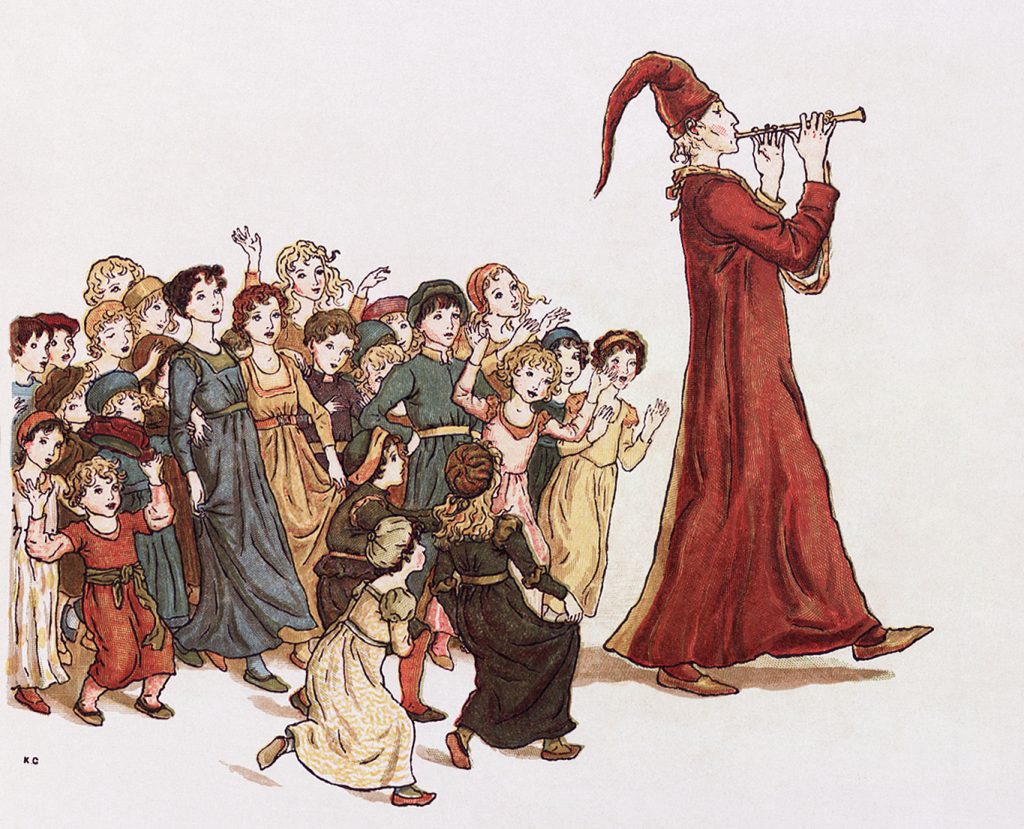
From a plague outbreak to a crazed killer, theories regarding this topic are wild and varied. Some think that the “Pied Piper” of this story is a recruiter, sent to attract able-bodied young people to emigrate from their villages and populate newly founded settlements. Other theories include a Pagan festival practice which may have met with misfortune or misadventure and even a “children’s crusade.” A previous “children’s crusade” decades before the Hamelin incident saw hordes of young people leave home in an attempt to reclaim Jerusalem. This event was disastrous and many children never made it back home.
While the legend of the Pied Piper lives on, the fact of the matter is that nobody really knows what happened to those children which are said to have disappeared with him on that distant summer’s day. Read more about this story here.
3. How Did Edgar Allen Poe Die?
Edgar Allen Poe, an American giant of gothic literature, was found incoherent and ill in the streets of Baltimore on October 3rd, 1849. The forty-year-old writer was wearing clothes that did not fit him, including a straw hat which, according to his friends and acquaintances, did not look like anything he owned. In fact, the friend who delivered Poe to the hospital thought that he had been robbed of his clothes.
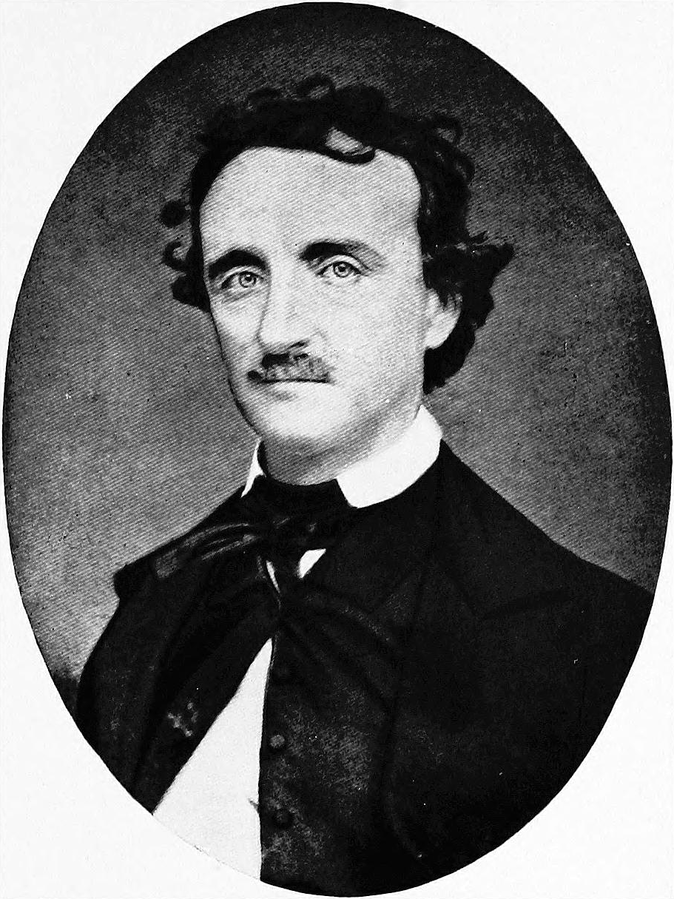
History remembers the death of Poe, which occurred several days after he was brought to the hospital, as the result of alcoholic excess. Evidence suggests, however, that the inventor of the modern detective story may have been killed by some other as yet undiscovered circumstance. It is known, for one thing, that Poe refused alcohol during his hospital stay and would only drink small quantities of water when coaxed. Reports indicate that Poe would experience periods of lucidity interspersed with bouts of wild madness and belligerence. This has prompted some theories suggesting that the poet was ultimately killed by the deadly rabies virus.
The fact that Poe’s clothing seemed to fit poorly has also lead to some speculation that he had fallen victim to a “cooping” scheme. Cooping is a shady practice wherein bands of criminals would kidnap an individual and force them to vote multiple times for a party or politician of their choice. The unfortunate victim would be forced to change clothes frequently and consume copious amounts of alcohol before being left for dead. The pub outside of which Edgar Allen Poe was found was a polling site, so it is not far-fetched to imagine that he may have met with foul play of this nature. Read more about Edgar Allen Poe’s death here.
4. Was Caesarion the Son of Julius Caesar?
Gaius Julius Caesar is remembered as one of the most influential statesmen who ever lived. A reformist, a dictator, and a symbol of power itself, it can be hard to imagine such an influential man having no proper heir. And yet, at the time of his death, Julius Caesar had adopted his grand-nephew, Gaius Octavius, to fill the gap left in his life by a son. Julius Caesar had one daughter, but she died in childbirth just a decade before her father’s assassination. There is, however, an entry on Julius Caesar’s family tree which calls the whole matter into question. This is Caesarion.
In the year 47 BC, Julius Caesar reinstated Cleopatra onto the throne of Egypt. After doing so, he lingered for several years in Egypt. This sparked rumors of a scandalous affair between the two world leaders. Not long after Julius Caesar’s eventual departure from Egypt, Cleopatra gave birth to a child; a son whom she named Ptolemy Philopator Philometor Caesar. The child, whose middle names mean “beloved of his father” and “beloved of his mother” was thereafter referred to as Caesarion, meaning “little Caesar.”

For the next several years, Cleopatra and the child would alternate between living in Egypt and at Caesar’s villa in Rome. During this time, Caesar even had a statue of them erected in the style of Venus Genetrix, his family’s patron deity, and her son, Cupid. It is not known, though, whether he truly acknowledged the child in private. Publicly, Caesarion was never claimed by Caesar.
After Caesar’s assassination, Cleopatra had Caesarion crowned pharaoh. He was, alongside his mother, Eqypt’s very last pharaoh. She and her new lover, Marc Antony, engaged in a bitter power struggle with Gaius Octavius which eventually resulted in the deaths of Cleopatra, Marc Antony, and the then-teenaged Caesarion. In the end, it the paternity of Caesarion has never been made entirely certain, although many modern scholarly sources do acknowledge the child as Caesar’s son. Read more about the twists and turns of Caesarion’s story here.
5. What Happened to Percy Fawcett?
Percy Fawcett was already a famed reporter by 1925 when he began preparing for what would be his final voyage into the uncharted jungles of Brazil. Fawcett was obsessed with this region, a tract of jungle in the Mato Grosso region which ran along the Xingu River. Years of exploring had given Percy a wild lust for adventure and his reports from within the jungle, which often featured mythical beasts of unfathomable proportions, had become wildly popular. This, combined with the 1911 discovery of the lost city of Machu Picchu by a Yale University professor, spurred Percy’s belief that within the region of the jungle which so fascinated him, a lost city was lying, just waiting to be discovered. He called this the “Lost City of Z.”
So, Percy brought his twenty-two-year-old son Jack and a friend named Raleigh Rimmel and set out into the jungle. As he explored, he sent letters to his wife, Nina, with reports on their progress. These reports inspired Sir Arthur Conan Doyle’s The Lost World and fascinated the public in general. The expedition began with significant difficulty and Raleigh Rimmel was injured early on. Despite this, Percy Fawcett reported that all was well when he wrote to his wife from a campsite which he called “Dead Horse Camp.” The two inexperienced young men were keeping up with the much older Percy and he expected that they would return home in triumph. This correspondence was the last time anyone conclusively heard from Percy or his companions. It was later discovered that the coordinates that Percy gave for the site of “Dead Horse Camp” were incorrect. Some believe this was done intentionally to deter rescue efforts which might needlessly place innocent people in harm’s way.
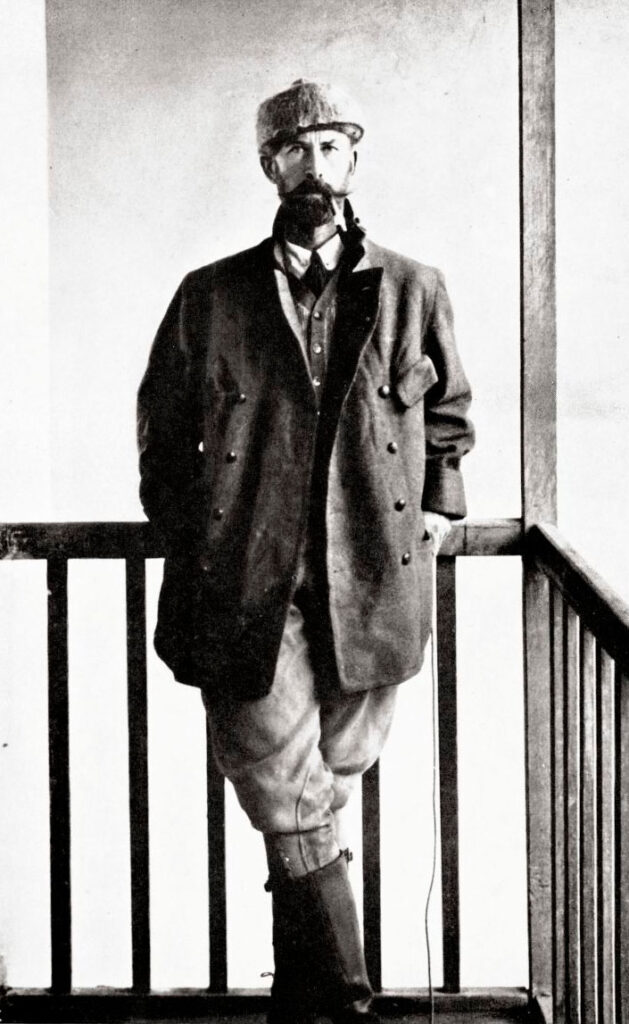
In any case, Percy was presumed to have died when the years began to stretch on without contact. Eventually, searches were mounted and a few small artifacts from the party’s supplies were recovered, although neither Percy’s nor his companions’ remains were ever found. Some years later, a Brazilian explorer named Orlando Villas Boas uncovered human bones while investigating his theory that Percy had insulted an aggressive native tribe and was slain in retaliation. The bones were never confirmed to have belonged to the missing party. Eventually, Fawcett’s signet ring was found in a shop in a nearby town. Otherwise, there have been no answers.
Shockingly, a “lost city” of sorts was eventually found in the Mato Grosso region. The Kuhikugu archeological site is quite close to the area wherein Fawcett hoped to find his Lost City of Z. To read more about the Percy Fawcett disappearance, check out my article here.
